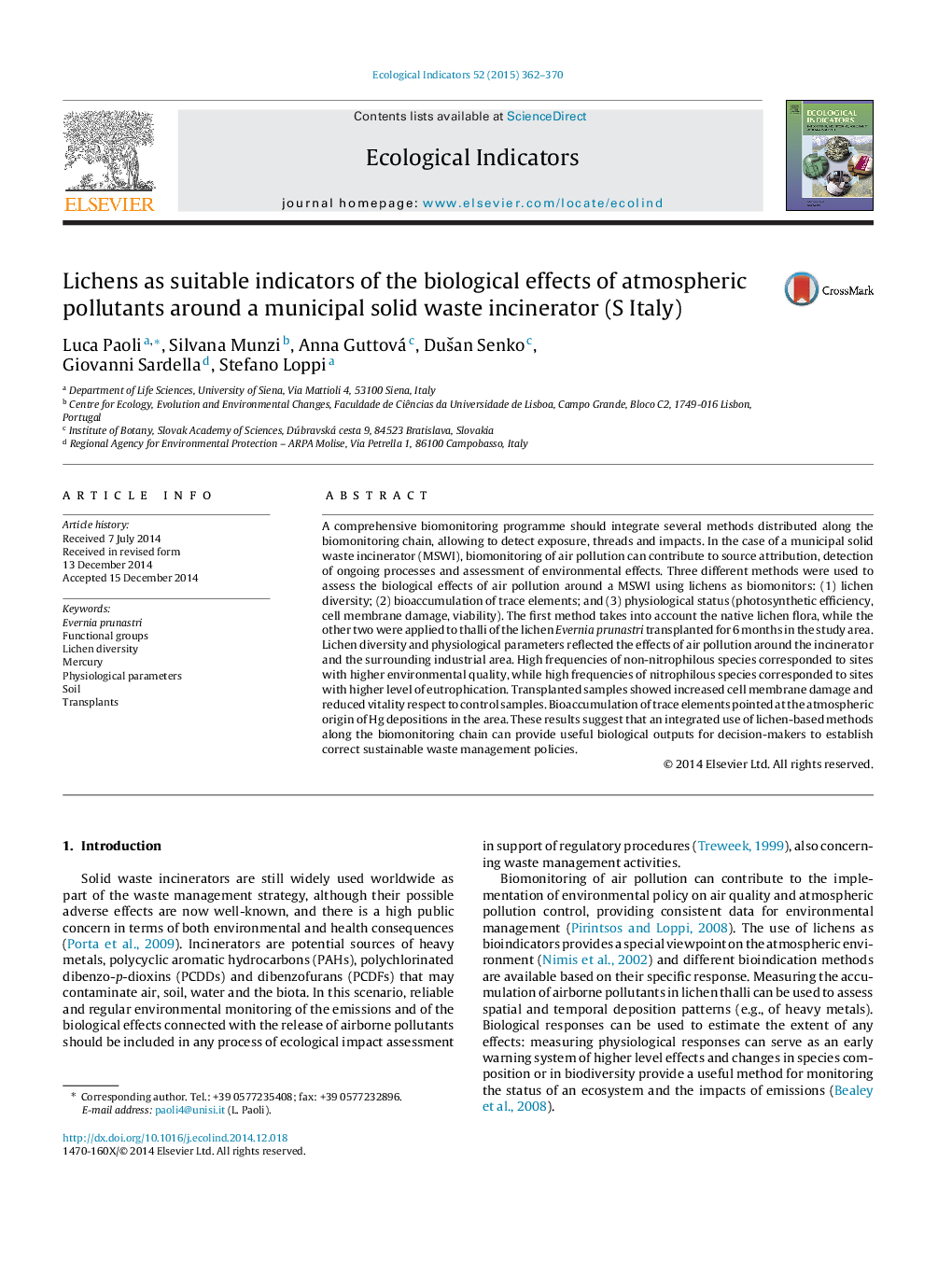| Article ID | Journal | Published Year | Pages | File Type |
|---|---|---|---|---|
| 6294568 | Ecological Indicators | 2015 | 9 Pages |
â¢Three lichen-based methods were used to assess environmental quality around a MSWI.â¢The functional traits of lichen diversity were helpful unspecific indicators.â¢Cell membrane damage and reduced vitality were observed in some of the transplants.â¢Enrichment factors pointed out the atmospheric origin of Hg depositions.â¢Lichens may provide useful biological data concerning waste management policies.
A comprehensive biomonitoring programme should integrate several methods distributed along the biomonitoring chain, allowing to detect exposure, threads and impacts. In the case of a municipal solid waste incinerator (MSWI), biomonitoring of air pollution can contribute to source attribution, detection of ongoing processes and assessment of environmental effects. Three different methods were used to assess the biological effects of air pollution around a MSWI using lichens as biomonitors: (1) lichen diversity; (2) bioaccumulation of trace elements; and (3) physiological status (photosynthetic efficiency, cell membrane damage, viability). The first method takes into account the native lichen flora, while the other two were applied to thalli of the lichen Evernia prunastri transplanted for 6 months in the study area. Lichen diversity and physiological parameters reflected the effects of air pollution around the incinerator and the surrounding industrial area. High frequencies of non-nitrophilous species corresponded to sites with higher environmental quality, while high frequencies of nitrophilous species corresponded to sites with higher level of eutrophication. Transplanted samples showed increased cell membrane damage and reduced vitality respect to control samples. Bioaccumulation of trace elements pointed at the atmospheric origin of Hg depositions in the area. These results suggest that an integrated use of lichen-based methods along the biomonitoring chain can provide useful biological outputs for decision-makers to establish correct sustainable waste management policies.
